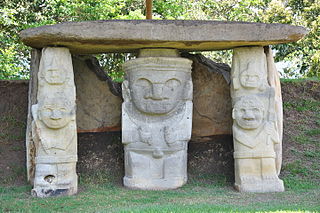
Albacete Balompié is a Spanish football team based in Albacete, in the autonomous community of Castile–La Mancha. Founded on 5 July 1939, it currently plays in Segunda División, the second tier of Spanish football, holding home matches at Estadio Carlos Belmonte, with a capacity of 17,524.

Luis de León, was a Spanish lyric poet, Augustinian friar, theologian and academic.

Henry IV of Castile, nicknamed the Impotent, was King of Castile and León and the last of the weak late-medieval kings of Castile and León. During Henry's reign, the nobles became more powerful and the nation became less centralised.

Duke of Osuna is a Spanish noble title that was first awarded in 1562 by King Philip II of Spain to Pedro Girón de la Cueva,. Pedro was also Viceroy of Naples, (1582–1586), Ambassador in Portugal and 5th Count of Ureña.

Caudete is a municipality of Spain located in the province of Albacete, Castilla–La Mancha. It has a population of 10.163. It is part of the Altiplanicie de Almansa comarca.

Juan Pacheco, 1st Duke of Escalona, better known as Juan Pacheco, Marquess of Villena, was a Castilian noble of Portuguese descent who rose to power in the last years of the reign of Juan II of Castile and came to dominate the government of Castile during the reign of Juan II’s son and successor Henry IV of Castile. Created The 1st Duke of Escalona in 1472, his other titles included, among others, Marquess of Villena and Master of the Order of Santiago.

Duke of Escalona is a hereditary title in the peerage of Spain, accompanied by the dignity of Grandee and granted in 1472 by Henry IV to Juan Pacheco, 1st Marquess of Villena.

Marquess of Villena is a hereditary title in the Peerage of Spain, granted in 1445 by John II to Juan Pacheco, Grand Master of the Order of Santiago and later also 1st Duke of Escalona.
Diego Pacheco Téllez-Girón Gómez de Sandoval, also called Diego Fernández de Velasco y Pacheco or Diego Pacheco Telles Giron Fernandez de Velasco y Enrique, was a Spanish noble and politician, who supported the French during the Peninsular War, and who was therefore known as an Afrancesado.

Pedro Pacheco de Villena, also known as Pedro Pacheco Ladrón de Guevara, was a Spanish cardinal and viceroy of Naples. In Italian his name is spelled Pietro Pacecco. His nephew Francisco Pacheco de Toledo was also a cardinal.
The Mayordomo mayor was the Officer of the Royal Household and Heritage of the Crown of Spain in charge of the person and rooms of the King of Spain. The Office of “Mayordomo mayor” was suppressed after the proclamation of the Second Spanish Republic in 1931 and never re-created after the restoration of the Monarchy in 1975, but it can be said that it is the historical precedent of the modern Head of the Royal Household of Spain.

Íñigo López de Mendoza y Quiñones, was the 1st Marquis of Mondéjar and 2nd Count of Tendilla. He was known as El Gran Tendilla and was a Spanish noble of the House of Mendoza. He was the son of Íñigo López de Mendoza y Figueroa, 1st Count of Tendilla, and the grandson of the poet Íñigo López de Mendoza, 1st Marquis of Santillana.

The Castle of Alarcón forms part of the fortifications built around the town of Alarcón in Cuenca, Spain. The fortress is composed of a walled enclosure, which houses the heart of the population and the castle proper, and of five exterior towers, separate and strategically placed.

Juan Friede Alter was a Ukrainian-Colombian historian of Jewish descent who is recognised as one of the most important writers about Colombian history, the Spanish conquests and a proponent of indigenism; the defense of the rights and descriptions of the oppression of indigenous people.
Hanequin de Bruxelles was a 15th-century Flemish architect and sculptor. He is considered to have introduced the Flemish Gothic style and the Hispano-Flemish style in Toledo.
Ángela María Téllez-Girón y Duque de Estrada, 16th Duchess of Osuna, GE (1925–2015) was a Spanish noblewoman. She was a holder of ten grandeeships of Spain.

Pedro Fernández de Córdoba y Pacheco, first Marquess of Priego, was a Castilian nobleman. He became one of the most powerful men in Andalusia, but after the death of Queen Isabella I of Castile (1451–1504), he supported her daughter Joanna of Castile (1479–1555) against King Ferdinand II of Aragon (1452–1516), who was regent of Castile. After serious disturbances in Córdoba in 1508 he was forced to throw himself on the king's mercy, and was arrested and exiled. Later he was pardoned and allowed to return.
















